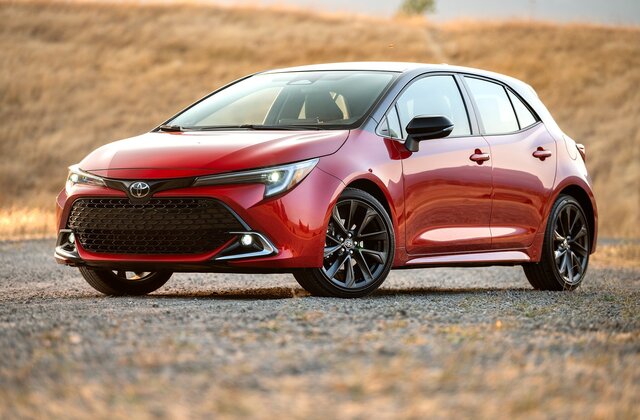Tesla, Inc. is a global American company with headquarters in Palo Alto, California, that manufactures solar panels, electric automobiles, and energy storage systems. The business was established in 2003 and focuses on home solar panels, lithium-ion battery energy storage, and electric vehicles (through the subsidiary company named Tesla Energy). Tesla Motors is a publicly traded corporation that uses the ticker symbol “TSLA” on the NASDAQ stock exchange.
The Tesla Roadster, a sports automobile that was introduced in 2008, was the company’s debut offering. The Roadster was the first electric vehicle to use lithium-ion battery cells that was highway legal in serial manufacturing and the first to have a range of more than 320 kilometers (200 miles). In addition to the Model S, a fully electric luxury sedan, and the Model X, an electric SUV, Tesla Motors was the first business to manufacture and market a fully electric sports vehicle.
The Model 3, a more affordable sedan that Tesla unveiled in 2016, has since overtaken all other electric vehicles in terms of global sales. In addition, the business created the Tesla Powerwall, a battery system for homes that stores electricity for use at night or during a power outage. Tesla also manufactures the Tesla Powerpack, a battery system of industrial quality that stores electricity for use by utilities or enterprises.
The company has dealt with a number of issues, including labor disputes, complaints about the working conditions at its factories, as well as production and financial challenges. However, Tesla has also developed a reputation for leading the electric vehicle industry and for pushing the limits of what is practical for electric vehicles.
Tesla’s direct-to-consumer sales model is one of its most important features. Tesla sells its automobiles directly to customers through its own showrooms and online rather than through conventional auto dealerships. This enables the business to better manage the sales and service experience while also fostering a stronger relationship with its clients.
Focusing on sustainability and minimizing the environmental impact of its goods is a key component of Tesla’s business. Compared to gas-powered cars, Tesla’s electric vehicles have a far less environmental effect and produce no exhaust emissions. In addition, customers can generate their own sustainable energy and lessen their reliance on fossil fuels thanks to the company’s solar panels and home storage systems.
With its cutting-edge goods and progressive mindset, Tesla has upset the traditional automobile sector and established itself as a market leader in electric vehicles. The company’s success has spurred a wave of innovation in the automotive sector and assisted in bringing electric automobiles into the mainstream.
Tesla will have a variety of electric vehicles available as of 2023, including the Tesla Roadster sports car, Model S luxury sedan, Model 3 affordable sedan, Model X full-size SUV, and Model Y. (a mid-size SUV). Each of these cars can travel at least 300 miles on a single charge and is entirely electric.
The Tesla Roadster, a two-seat sports automobile, was the company’s first creation. It was released in 2008 and is the world’s longest-range electric vehicle with a range of more than 620 miles on a single charge. Although Tesla has stated that it will eventually restart production of the Roadster, it is no longer being manufactured.
A luxury vehicle called the Model S was released in 2012. It has received high praise for its performance and technology and has a range of up to 402 miles on a single charge. The Model S has received countless other awards and was the first electric vehicle to be crowned Motor Trend’s Car of the Year.
A more affordable car called the Model 3 was released in 2016. It can travel up to 310 miles (500 km) on a single charge and accelerates from 0 to 60 miles per hour (96 km/h) in 5.0 seconds. The vehicle’s top speed is 209 km/h (130 mph).
Both a front-view camera and a regular rear-view camera are present in the Model 3. The vehicle also has a radar that can see in the future and a surround-view camera.
As more and more individuals explore for methods to lessen their carbon footprint and live more sustainably, electric automobiles, and Teslas in particular, have grown in popularity in recent years. Electric vehicles (EVs) have advantages and disadvantages of their own, just like any other form of vehicle. As a way to assist you in determining if driving a Tesla electric car is the best option for you, we will also discuss the different benefits and drawbacks of doing so in this post.
Benefits of Using a Tesla Electric Vehicle
- Environmental benefits: Using a Tesla electric vehicle has a good effect on the environment, which is one of its main advantages. EVs don’t emit any exhaust emissions, unlike gas-powered vehicles, therefore they don’t contribute to air pollution or greenhouse gas emissions. In fact, Tesla claims that over the course of their lifetime, electric cars emit around half as much carbon dioxide as a comparable gas-powered automobile.
- Lower operating expenses: Possibility of lower operating costs is another benefit of driving a Tesla electric vehicle. Compared to internal combustion engines, electric motors are more efficient, therefore EVs typically require less maintenance and have fewer parts that could wear out or malfunction. As a result, you might be able to cut costs on things like spark plug changes, oil changes, and other standard maintenance. Additionally, it may be less expensive to “fuel” your Tesla per mile because electricity is typically less expensive than gasoline.
- Performance: Tesla electric vehicles are renowned for their excellent handling and performance. Thanks to their quick torque and strong electric motors, many Tesla models can accelerate from 0 to 60 mph in a matter of seconds. Additionally, EVs seem smoother and more responsive to drive since they have fewer moving parts than gas-powered cars.
- Modern technology: A number of cutting-edge technological innovations that might improve the driving experience are included in Tesla electric automobiles. For instance, many Tesla models have self-driving features that let the vehicle manage some aspects of driving on its own. Other features might include a sizable touchscreen display for managing various tasks, a top-notch audio system, and over-the-air software updates that could gradually add new capabilities to the automobile.
Disadvantages of Driving a Tesla Electric Car
- The short range of the majority of Tesla electric car models is one of the biggest drawbacks of owning one. While some current Tesla models may travel more than 500 miles on a single charge, many older models only offer a few hundred miles of range. Drivers who have to travel long distances or who do not have access to charging facilities on their usual routes may find this to be a worry.
- High upfront cost: Owning a Tesla electric car has a high upfront cost, which could be a drawback. While certain Tesla vehicles, like the Model 3, are reasonably priced, others, like the Model S and Model X, may be rather pricey, especially when options and upgrades are taken into account. Because of this, some people could find it impossible to afford a Tesla even if they want to switch to an electric car.
- Limited availability of charging infrastructure is another potential problem when operating a Tesla electric vehicle. Although Tesla offers a network of fast-charging Supercharger sites, these are not always easy or straightforward to reach. Finding a location to charge while traveling can be more challenging because not all public charging stations are compatible with Tesla automobiles.
- Finally, the dependence on electricity as a fuel source is another potential drawback of owning a Tesla electric vehicle. Electricity has its own benefits despite being a cleaner and more effective fuel than gasoline.











+ There are no comments
Add yours